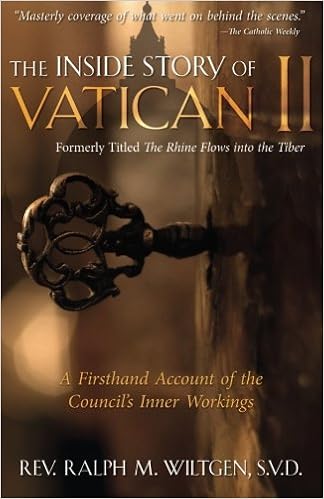 One of you readers recently sent me an interesting link to a page of the blog of Fr. Joseph Komonchak. Fr. Komonchak has provided the original – but rejected – schemata for the Second Vatican Council.
One of you readers recently sent me an interesting link to a page of the blog of Fr. Joseph Komonchak. Fr. Komonchak has provided the original – but rejected – schemata for the Second Vatican Council.
At some time you might peruse them and see what might have been, the Council that might have been.
The “schemata” were documents worked up during the preparatory phase before the Council. Various schemas (schemata) were prepared on different themes. A few months before the Council opened, John XXIII had the First Series of seven sent to the Council Fathers around the world. Some bishops, especially the Dutch, under the inspiration of Fr Edward Schillebeeckx engineered a overturning of the order of consideration of the themes, pushing liturgy to the fore. Various liberal factions began attacking the schemata and issuing rival schemata.
You can read about the pirating of the Council and the rejection of the original schemata in
The Rhine Flows into the Tiber: A History of Vatican II by Ralph Wiltgen
This book can help you understand what really went on during the Council behind the scenes. Subsequently, it will show you how certain factions now seek to control Synods.


































Is there a link to the schemata?
The post by Fr Komonchak with links to the Schemata is here: https://jakomonchak.wordpress.com/2012/09/28/the-council-that-might-have-been/
Colm:
https://jakomonchak.wordpress.com/2012/09/28/the-council-that-might-have-been/
Thanks for the link Eamonn
They really should have kept the “Defending Intact the deposit of fatih” as that schema accurately anticipated many of the issues we are seeing today.
The sources of revelation was good and many of the ideas in that document appear in Dei Verbum particularly the emphasis on priest’s preaching based on the texts. The original schema reads “According to the advice of the Fathers of the Church, “those who exercise the ministry of
preaching must never neglect the study of the sacred books;” a priest’s sermon “should be based on
a reading of the Scriptures,” lest externally he become an inept preacher because “internally he is
not a listener.”
I also thought the Christian moral order contained some prophetic notions particularly around cautioning the use of technology. That is so true particularly in our era.
I liked the document on the sexual order and there too, they combined both vocations in the Church, married, unmarried, vowed virginity as having equal dignity. “For this reason, the Holy Synod has decided to extol and defend in a single dogmatic Constitution the nobility both of chastity in the unmarried and its most beautiful fruit, sacred virginity, and of chaste marriage and its heavenly fruit, the Christian family.”
I can see how it was rejected as being negative but I think they threw the baby out with the bathwater but hindsight is 20/20
Thanks for the link Eamonn
They really should have kept the “Defending Intact the deposit of fatih” as that schema accurately anticipated many of the issues we are seeing today.
The sources of revelation was good and many of the ideas in that document appear in Dei Verbum particularly the emphasis on priest’s preaching based on the texts. The original schema reads “According to the advice of the Fathers of the Church, “those who exercise the ministry of
preaching must never neglect the study of the sacred books;” a priest’s sermon “should be based on
a reading of the Scriptures,” lest externally he become an inept preacher because “internally he is
not a listener.”
I also thought the Christian moral order contained some prophetic notions particularly around cautioning the use of technology. That is so true particularly in our era.
I liked the document on the sexual order and there too, they combined both vocations in the Church, married, unmarried, vowed virginity as having equal dignity. “For this reason, the Holy Synod has decided to extol and defend in a single dogmatic Constitution the nobility both of chastity in the unmarried and its most beautiful fruit, sacred virginity, and of chaste marriage and its heavenly fruit, the Christian family.”
I can see how it was rejected as being negative but I think they threw the baby out with the bathwater but hindsight is 20/20
Fr. Komonchak explains why the schemata were changed:
“those texts were severely criticized for falling short of the theological and pastoral renewal already underway.”
Fair criticism – in the 60s we began seeing that the secularizing tendencies underway since the French and American Revolution were, in fact, going to be a permanent feature of Western political life. Mass communication was beginning to bring many ideas out into the broader market place. In that sense, the emphasis on religious freedom was a good idea and the formation of conscience was important too.
The Church had an important role to play in religious formation and Thomas was being rescued from a suffocating scholasticism all of these were and are positive developments.
And, yes, there was wide consensus that the liturgy needed reform…
But it appears that the Council was just lopsided and important corrective voices were marginalized. That is always a big problem.
Sorry to say but we do have to lay the blame on that to John XXIII and Paul VI..they had their bright spots but were not perfect leaders by any means.
Another example of too much politics in the Church…